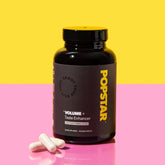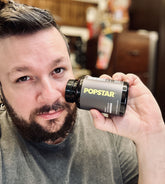Sexercise, a blend of sexual activity and exercise, is a concept that highlights how intimacy can also serve as a form of physical workout. Beyond just an entertaining way to burn calories, sexercise may help in improving cardiovascular health, strengthening muscle groups, supporting mental well-being, and boosting overall relationship satisfaction. In this article, we’ll dive deep into sexercise—covering what it is, how it can benefit men’s health, key exercises to try, how frequently to practice, and much more. Our goal is to provide a comprehensive, NLP-friendly overview of the topic while also keeping the content engaging and practical for readers looking to enhance their intimate wellness.
Table of Contents
- What Is Sexercise?
- How Does Sexercise Benefit Men’s Health?
- Key Exercises to Enhance Intimacy and Performance
- Lifestyle Factors that Influence Sexercise
- How Often Should You Practice Sexercise?
- Sexercise Tips for Improved Stamina
- FAQs About Sexercise
- References
What Is Sexercise?
At its core, sexercise involves treating sexual intimacy as a form of physical exercise, which means emphasizing the various ways sexual activity can improve fitness. Engaging in intimacy requires energy, flexibility, and strength—similar to a modest workout.
While ‘exercise’ in most people’s minds comes with images of the gym, running, or lifting weights, those activities might not be the sole means of getting fit. For men, especially those looking to enhance their cardiovascular endurance and muscular tone, incorporating bouts of sexual activity as part of an overall fitness routine may provide holistic benefits. During sexual arousal, your heart rate increases, blood vessels dilate, and your respiratory rate picks up—mirroring a light-to-moderate intensity workout.
In many cases, sexercise focuses not only on the physical aspect of intercourse but also on broader factors like emotional connection, mental well-being, and hormonal release. Balance is key: not all sexual activity will equate to jogging or weight-lifting, but consistently engaging in sex, combined with other healthy habits, can lead to a more robust and fulfilling lifestyle. The idea takes on even greater relevance in men’s health, as finding ways to increase libido, maintain testosterone, and improve erectile function might dovetail effectively with a routine of pleasurable activity.
Ultimately, sexercise is about merging the fitness value of physical activity with the intimate connection that comes from sexual encounters. By recognizing how these two aspects complement each other, men can bolster their stamina, strengthen their pelvic floor, and improve relationship quality—all while enjoying an active sex life.
How Does Sexercise Benefit Men’s Health?
Sexercise contributes a series of distinct benefits to men’s health, spanning the realms of cardiovascular performance, muscle toning, stress management, and emotional bonding. Below is a deeper look at how it impacts the body and mind.
1. Cardiovascular Health: Sexual activity can elevate heart rate and stimulate blood flow, which are key for heart health. Over time, frequent moderate activities that raise your pulse can contribute to reduced risk of hypertension and improvement in overall cardiovascular performance.
2. Pelvic Floor Strength: A strong pelvic floor supports erectile function, urinary control, and sexual satisfaction. Through purposeful movements and positions during intimacy, you can activate and train the muscles around your pelvis, leading to enhanced control and heightened pleasure.
3. Hormonal Balance: Testosterone plays a critical role in men’s sexual desire, energy levels, and muscle development. Some research suggests that regular sexual activity can help maintain healthy testosterone levels. Conversely, healthy testosterone may support a more vibrant libido—generating a positive feedback cycle beneficial for men’s wellness.
4. Mood Enhancement and Stress Relief: Orgasms and physical closeness trigger the release of endorphins and oxytocin—also known as the “love hormone.” The presence of these substances reduces stress, anxiety, and depression. Overall, the synergy of physical contact, emotional connection, and hormonal secretion can boost mental health.
5. Relationship Satisfaction and Emotional Bonding: Sexercise is not only about physical activity; it also nurtures an emotional bond with your partner. Heightened levels of trust, communication, and intimacy can lead to a stronger relationship, thereby improving emotional well-being and, in some cases, overall life satisfaction.
6. Weight Management and Body Composition: While not as intensive as running or gym workouts, sexual activity still burns calories. Gradually, consistent sessions can contribute to healthier body composition. That said, combining regular sex with a balanced lifestyle—proper diet, stress management, sleep, and formal exercise—remains the best approach for adipose tissue control and muscle building.
Whether you aim to build core stability, support a biochemical balance, or improve mental resilience, sexercise can help you address each of these areas. Its advantage lies in the pleasurable nature of the activity, which can make consistent participation more likely than some traditional exercise routines.
Key Exercises to Enhance Intimacy and Performance
Men interested in enhancing the physiological benefits of sex can integrate targeted exercises into their everyday routines. These exercises, while beneficial to overall fitness, also focus on the muscle groups most responsible for sexual stamina, pelvic control, and agility.
1. Kegel Exercises
Kegel exercises strengthen the pelvic floor, a set of muscles crucial to erectile function and ejaculatory control. To perform a Kegel, tighten the muscles used to interrupt urination and hold for five seconds, then relax. Repeat multiple times daily. Improved pelvic floor strength can lead to more intense orgasms, better bladder control, and improved sexual performance.
2. Planks
Planks are an excellent compound exercise for core strength. By holding a push-up position on your forearms, your abdomen, lower back, and shoulders get a significant workout. A sturdy core helps maintain various intimate positions without fatigue and can also help reduce back pain.
3. Squats
Squats target the glutes, quads, and hamstrings, forming a strong lower body foundation. They can enhance thrusting power, increase range of motion during intercourse, and improve overall balance. Proper form is crucial—keep your back flat and knees behind your toes to avoid injury.
4. Yoga Stretches
Yoga improves flexibility, injury prevention, and mindfulness. Poses like the “Downward Dog,” “Cobra,” and “Warrior II” help open the hips, stretch the back, and build balance. Greater flexibility may open up a wider range of comfortable positions during intimacy and reduce muscle strain.
5. Cardiovascular Activities
Running, brisk walking, cycling, or swimming boosts heart health, increases endurance, and supports healthy blood circulation. Adequate blood flow is critical for erectile function, making regular cardio excellent preparation for more fulfilling sex. Thirty minutes of moderate-intensity cardio per day is often recommended for overall well-being.
By incorporating these targeted exercises, men can see improvements in their stamina, muscle tone, and pelvic strength, which all translate into heightened performance and satisfaction during intimate encounters. Consistency, gradual progression, and attention to form are essential elements of any exercise program, including one aimed at enhancing sexual health.
Lifestyle Factors that Influence Sexercise
Sexercise transcends the bedroom, tapping into broader lifestyle habits that can either enhance or impede your intimate well-being. Here are several impactful lifestyle components that can substantially shape men’s ability to reap the benefits of sexercise:
- Nutrition: A balanced diet that includes high-quality protein, complex carbs, healthy fats, and micronutrients fosters sustained energy, hormone regulation, and sexual responsiveness. Foods rich in zinc and magnesium, such as nuts, seeds, and dark leafy greens, may promote healthy testosterone levels.
- Sleep Quality: Sleep is critical for testosterone production, muscle recovery, and mental alertness. Short, fragmented sleep can reduce libido, hinder muscle development, and elevate stress levels—all of which may limit your enthusiastic engagement in sexercise.
- Stress Management: Chronic stress leads to elevated cortisol, a hormone that may suppress both testosterone and sexual desire. Techniques like mindfulness, meditation, or even hobbies can help control stress, allowing more mental and physical energy to be directed toward intimacy.
- Hydration: Proper hydration supports circulation, lubricates joints, and aids with stamina. Drinking enough water helps maintain an optimal environment for your muscles—and can indirectly support erectile function.
- Alcohol and Smoking: Alcohol in moderation might reduce inhibitions, but excessive intake impairs sexual performance, lowers testosterone, and leads to dehydration. Smoking, especially cigarettes, constricts blood vessels and has a detrimental effect on cardiovascular health, compromising blood flow necessary for sexual performance.
Establishing a well-rounded lifestyle that accommodates good nutrition, sleep, and stress management can greatly amplify the impact of sexercise. When you feel stronger, rested, and mentally calm, you’re better positioned to enjoy an active and fulfilling intimate life.
How Often Should You Practice Sexercise?
The ideal frequency of sexercise depends on various individual factors, including age, fitness level, personal preferences, and medical considerations. While there is no universal guideline, most couples experience benefits by engaging in sexual activity at least once or twice a week. This consistency helps maintain cardiovascular engagement, sexual responsiveness, and an effortless flow of emotional connection.
However, the quality of your sessions can matter more than their frequency. If you find yourself rushing or feeling fatigued, consider whether you need more rest or a more varied approach to intimacy. Adding playful or exploratory elements, such as different positions, can keep routines fresh and invigorating.
Age also plays a significant role, as hormonal fluctuations and energy levels often shift over time. While younger men might be able to sustain high activity levels, older men might prefer less frequent but more mindful sessions. A balanced approach that listens to the body’s cues typically produces the greatest benefits and avoids burnout.
Beyond personal preference, medical conditions or medications may also affect ideal sexercise frequency. Men dealing with heart conditions, high blood pressure, or other health issues should consult a healthcare professional before initiating high-intensity sexual activities. Ultimately, one should strive for a pleasurable balance that supports each partner’s goals and comfort levels.
Sexercise Tips for Improved Stamina
Even if you have a strong foundation of physical fitness and a healthy lifestyle, employing specific techniques can take your sexercise routine to new heights. Here are several tips to keep you at your best:
- Include Warm-Up and Cool-Down: Just like any workout, a few minutes of gentle stretching or light activity can help your body prepare for more vigorous exertion during intimacy. Afterward, savor some calm downtime to lower your heart rate and embrace relaxation with your partner.
- Engage All Muscle Groups: Sexcertain positions can engage the core, lower body, and upper body muscles simultaneously. Vary positions to ensure you’re targeting a range of muscle groups and limiting overuse or fatigue.
- Practice Controlled Breathing: Focus on steady, rhythmic breathing to optimize oxygen delivery to the muscles. Breathing techniques can also elevate mental clarity and reduce tension, enhancing overall pleasure and performance.
- Monitor Intensity: Each sexual encounter may differ. Gauge how your body feels, and make adjustments. Some days call for a slow, sensual pace, while others might lead to more dynamic, spirited sessions.
- Look for Variety: Engaging in the same intimacy approach every time can dull excitement. Switch positions, settings, or role-play scenarios from time to time to keep the spark alive and challenge your fitness in new yet equally enjoyable ways.
- Couple Communication: A candid discussion with your partner about what feels good, what’s challenging, and what might be improved fosters a stronger bond. This open dialogue often results in more fulfilling experiences for both partners.
By blending practical exercise insights with sensual exploration, you expand your horizons both inside and outside the bedroom. A consistent, mindful approach can transform each sexual interaction into a chance for deeper connection, better fitness, and personal fulfillment.
FAQs About Sexercise
Can Sexercise Replace Traditional Exercise Routines?
Sexercise can be a valuable supplement but rarely replaces the need for structured exercise routines. To build optimal cardiovascular health, muscular strength, and flexibility, traditional exercises such as running, weight training, or yoga are still recommended. Sexercise, however, can offer a fun boost in motivation and help maintain consistent physical engagement, especially for those seeking more excitement in their fitness journey.
Does Sexercise Help With Erectile Dysfunction?
Active sexual engagement, in conjunction with pelvic floor exercises, can aid blood flow and muscle control—factors linked to erectile function. Nonetheless, men with persistent erectile dysfunction should consult a healthcare professional to identify underlying causes, which may include hormonal imbalances, hypertension, or psychological factors. Sexercise can be part of a multi-faceted approach but isn’t the sole cure for ED.
What Role Do Mental and Emotional Factors Play in Sexercise?
Mental well-being is pivotal. Sexercise doesn’t just involve physical performance—it intertwines with emotional intimacy, stress levels, and self-confidence. Addressing mental health concerns, such as anxiety or depression, can significantly improve your capacity to enjoy and benefit from a more active sex life.
How Important Is It to Discuss Sexercise With a Partner?
Communication underpins success in any sexual pursuit. Discussing comfort levels, boundaries, and specific goals with your partner fosters trust and creates an environment where both parties can experiment and grow together. Consequently, open dialogue can transform a potentially awkward concept into an exciting shared activity.
Are There Any Risks Associated With Sexercise?
Like any physical activity, excessive strain without proper preparation can lead to muscle pulls, sprains, or fatigue. Additionally, individuals with chronic health conditions—such as heart disease—must exercise caution and consult a medical professional before engaging in high-intensity sexual activity. Safe practices, including protection and mutual consent, further ensure a positive experience.
How Can I Improve My Libido to Maximize Sexercise?
Improving libido often involves adopting healthy lifestyle habits, such as regular exercise, stress management, and sufficient sleep. In some cases, medical interventions or counseling may be necessary if low libido stems from hormonal issues or psychological concerns. Integrating enjoyable forms of physical activity and prioritizing self-care can naturally boost desire.
Can Specific Diet Changes Enhance My Sexercise Routine?
Certain dietary elements, including foods high in antioxidants, zinc, and magnesium, can contribute to better hormone balance and energy levels. Rich sources of these nutrients include berries, whole grains, lean meats, seafood, and leafy greens. Coupling a nutrient-dense diet with ample water intake sets the stage for optimal performance in and out of the bedroom.
Is Sexercise Effective for Weight Management?
Regular sexual activity can contribute to a modest calorie burn and support weight management when combined with other healthy lifestyle factors. Though sexercise alone may not suffice for significant weight loss, its pleasurable nature can motivate consistent physical engagement, complementing a broader fitness or weight-management program.
When Should I Seek Professional Advice?
If you experience persistent pain, pronounced fatigue, or difficulty maintaining an erection, consider consulting a physician or urologist. Also, if psychological factors like anxiety or fear of performance are hindering your sex life, a mental health professional may provide guidance for improvement. Professional advice ensures your approach to sexercise is safe, tailored, and maximally beneficial.
References
- Journal of Sexual Medicine (2013). Does Regular Sexual Activity Enhance Health? PubMed.gov
- American Heart Association (2020). Sexual Activity & Cardiovascular Health. heart.org
- National Institutes of Health (NIH) (2021). Physical Activity Guidelines. health.gov
- Harvard Health Publishing (2021). The Connection Between Exercise and Sexual Function. health.harvard.edu
A note from Men’s Health Website: Sexercise is an innovative way to approach your health and fitness goals. By combining physical exertion, emotional connection, and a bit of fun, you can enhance both your intimate life and your overall wellness. Always listen to your body and consult with a healthcare professional if you experience discomfort, persistent fatigue, or any troubling symptoms. A personalized approach ensures you can enjoy the benefits of sexercise safely and effectively.




















































